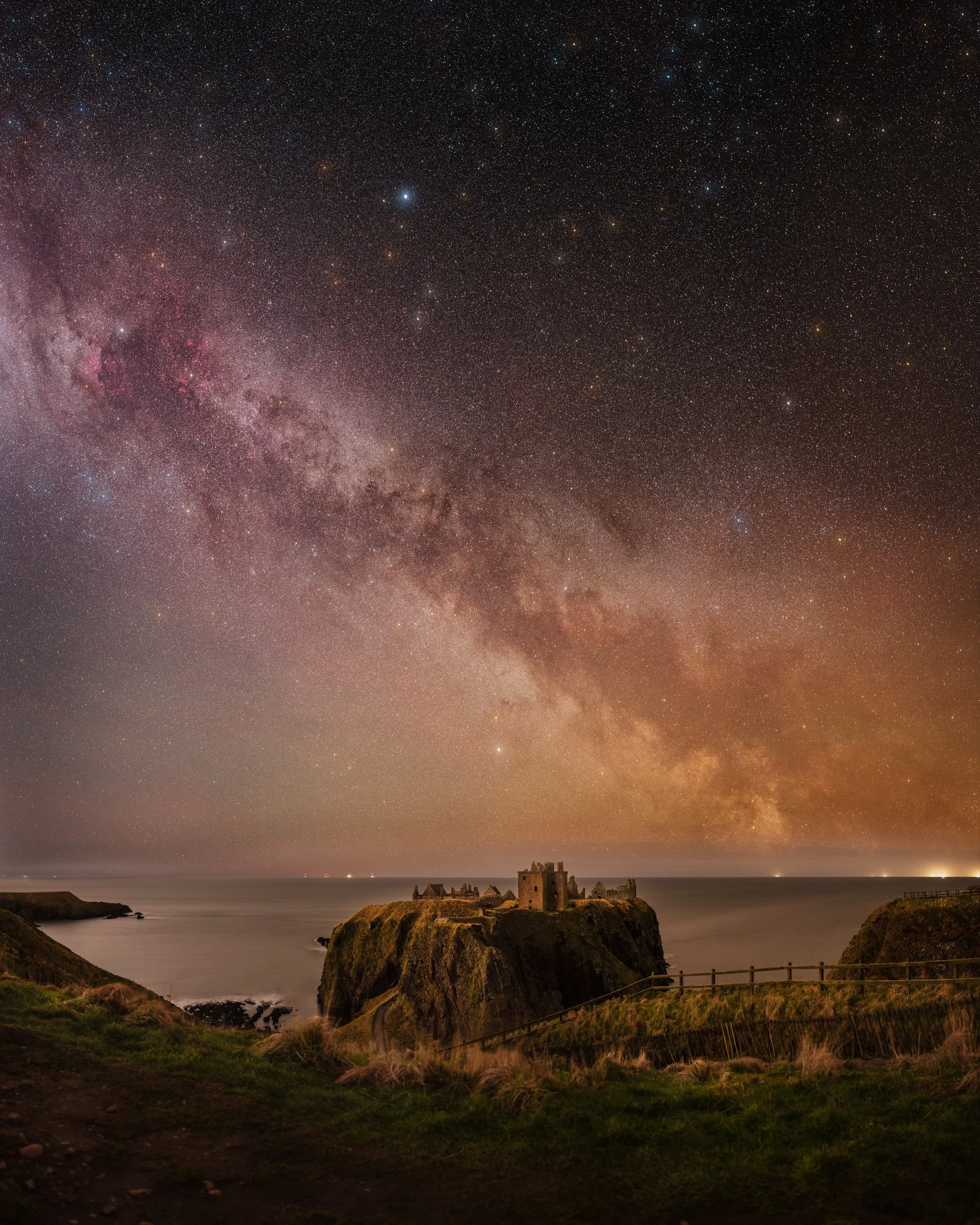Landscape Astrophotography Guide
Learn how to shoot landscape astrophotography nightscapes of beautiful starry skies.
Designing your Picture and Field of View
One of the first lenses I used to capture starry skies was a 14-24mm/2.8 lens, and before that, many years ago, a fixed 24/2.8 prime lens when I had no 14mm zoom. Too much of the time, my zoom was fixed at 14mm because I was always wanting to have a big sky and foreground together. One of the reasons I was doing this was obvious - with no tracker at the time, the wider the focal length, the longer I could expose for, say 20 seconds. The picture below was an inbetween shot in 2022 when I was shooting a tracked mosaic with my other camera (Nikon D850). I had long since stopped taking every shot at 14mm by 2022 (actually much earlier). This below shot is tracked with a 14mm lens. The foreground is taken with the tracker off, otherwise the landscape would be a blur.
Although the picture above is not with a 14-24mm zoom that I used to own, it is shot at 14mm and this is going to be the first difference I show. There are lots of reasons I stopped this practice. One of the most obvious, was that I grew and developed what I wanted to do, and my skills when shooting complex scenes. Other reasons include the realisation that not every shot (or not as many as I was taking) required such an expansive field of view). I am now glad, that I quickly got over this habit. Below, is the same scene, on the same night, shot entirely with a 50mm lens.
I don’t think I have to point out the very obvious difference in detail between a 14mm milky way to a 50mm milky way. One is much more effort to do and takes a lot more skill to pull off. I should mention that I still to this day find a great deal of satisfaction in a 14mm night shot that works photographically. I just bear in mind the foreground. The foreground is better here than in the previous picture, and it is shot with a much tighter lens.
This page is being continually developed and expanded. Check back soon.


